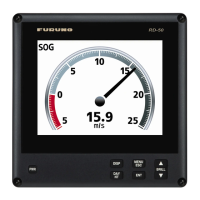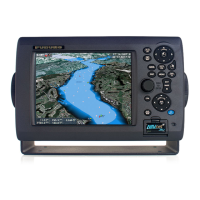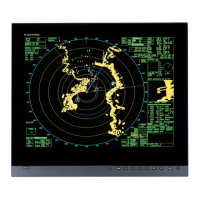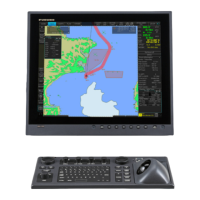Why does my Furuno Monitor show a BATTERY ALARM?
- SStephen McdonaldJul 30, 2025
The BATTERY ALARM on your Furuno Monitor indicates that the voltage of the internal battery is low. It is suggested to have a qualified technician replace the battery.
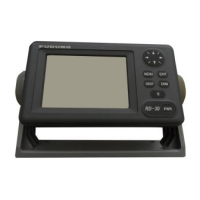
Why does my Furuno Monitor show a BATTERY ALARM?
The BATTERY ALARM on your Furuno Monitor indicates that the voltage of the internal battery is low. It is suggested to have a qualified technician replace the battery.
General warnings about opening, disassembling, or modifying the equipment.
Warning against using the equipment for unintended purposes to avoid affecting performance or warranty.
Welcome message and introduction to the RD-30 Multi Display from FURUNO Electric Company.
Highlights the RD-30's capabilities, including display types, alarm functions, and sensor compatibility.
Details the functions of the RD-30's control buttons and how to access them.
Instructions for powering the RD-30 unit on and off using the PWR switch.
Guide to adjusting the brightness of buttons and screen contrast using the DIM key.
Explains how to cycle through different display types and arrange data presentation.
Illustrates various default digital data items and the display sequence.
Details how water temperature, depth, speed, wind, current, and atmospheric pressure can be shown in graph format.
Explains how speed, temperature, wind, compass, and current data are presented in analog and digital formats.
Describes the highway display's function for showing ship's progress, range, bearing, course, and speed towards a destination.
Instructions on how to adjust the zoom range for the highway display.
Explains how to use the '*' key to view received data and shows sample data displays.
Introduces the RD-30's ten alarm conditions and how to configure audio alarm types.
Details how to select the buzzer type (short, long, continuous) for audio alarms.
Explains how to set up speed alarms (low, high, inside, outside range).
Details how to configure water temperature alarms (low, high, inside, outside range, shear).
Guide to setting up depth alarms (low, high, inside, outside range).
Explains how to activate and configure arrival and anchor watch alarms.
Details how to set up the XTE alarm to warn when the boat is off its intended course.
Explains how to set the trip alarm to notify when a specific distance has been traveled.
Guide to setting up the odometer alarm for tracking traveled distance up to 999 nm.
Explains how to set time alarms, similar to an alarm clock, for specific arrival times.
Details how to set countdown alarms for specific durations (5, 10, or 15 minutes).
Explains how alarm messages appear, how to silence them, and how to view the message display.
Instructions for resetting trip, odometer, and graph indications to zero.
Guide to selecting units for temperature, distance/speed, depth, and wind.
Explains how to apply offsets to refine accuracy of speed, temperature, depth, and wind data.
Instructions for setting the time display to 12-hour or 24-hour notation.
Guide to selecting latitude/longitude or Loran/Decca TDs format and setting chain/station pairs.
How to activate simulation mode to familiarize with RD-30 features using internally generated data.
Configures IN/OUT and AUX ports, and outputting power to other display units.
Details how to select specific NMEA sentences for input/output through IN/OUT and AUX ports.
Explains how to display bearings in true or magnetic format.
Guide to setting magnetic variation manually or using automatic settings for accuracy.
Instructions for setting up and calibrating the heading sensor.
Details the calibration process, results, and prompts for the heading sensor.
How to adjust the offset for the heading sensor if there's a difference between sensor and actual bearing.
How to adjust the damping factor to control sensor response to heading changes.
Guide to selecting and arranging display types (Digital, Graph, Graphic, Highway) for the RD-30.
Details how to configure digital displays, including selecting the number of indications and data sources.
Lists available data types for digital displays and explains how to select them.
Explains how to choose graph display options and set parameters like base point, range, and period.
Details specific settings for temperature, depth, SOG, STW, wind, current, and pressure graph displays.
Guide to configuring graphic displays, including speedometer, temperature, ROT, and other types.
Regular checks to maintain the RD-30's performance, including connections and cleaning.
Lists potential error messages like BACKUP ERROR DATA, RAM ERROR, and ROM ERROR.
Procedure for running a diagnostic test to check ROM, RAM, ports, battery, keyboard, and LCD.
Guide on what to do when the BATTERY ALARM! warning appears, related to the internal battery.
Instructions for clearing all backup data, including menu settings, trip, and odometer readings.

